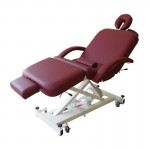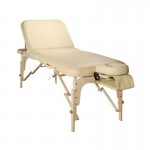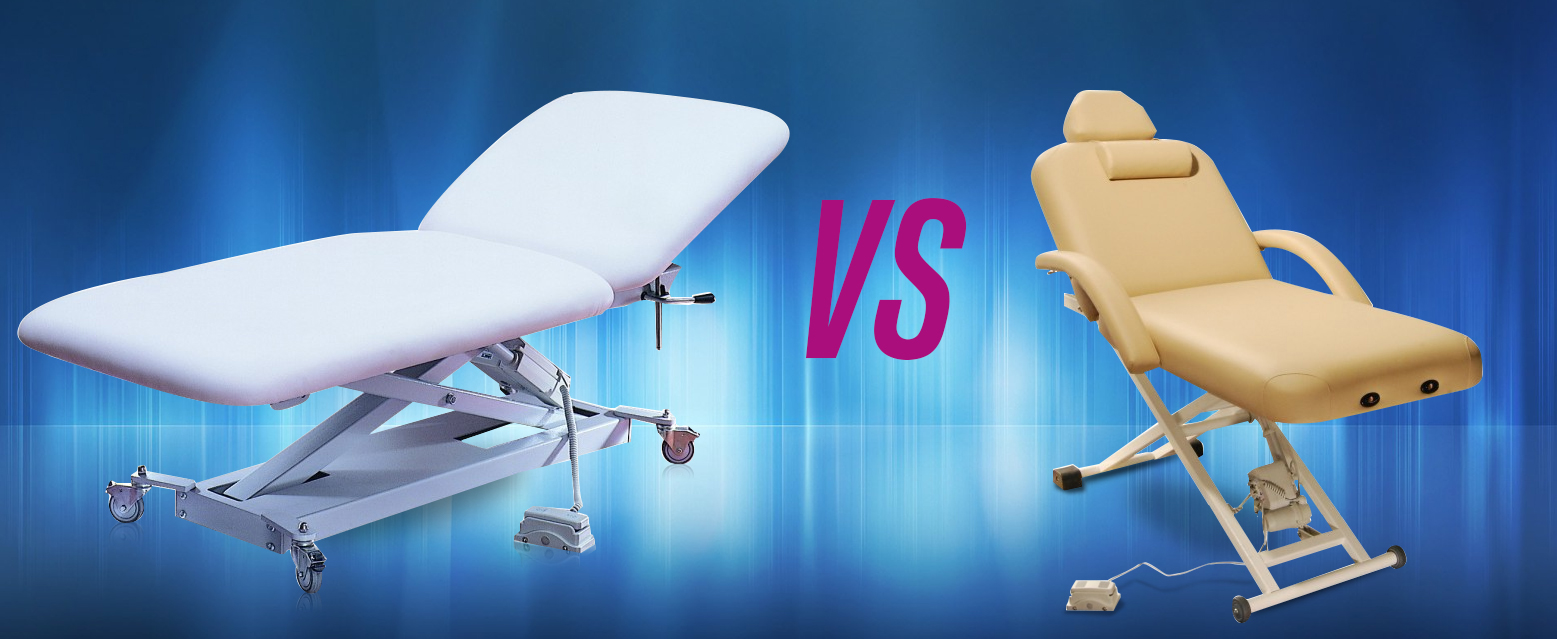When people ask which type is better, they usually mean: which one is right for my practice? Comparing these two types of tables really boils down to two intimately tied aspects: adjustability and comfort. It might seem like an odd comparison, in fact, because in both cases the 3-part massage tables definitely win out; however, depending on the type of treatment and practice, a two-part massage table might be just fine.
Three-part tables
More adjustable than their counterparts, three part massage tables allow you to move the client’s legs as well as the backrest. This added degree of comfort is great for long treatments on the client’s face or upper body, and encourages better posture: the more sections to a table, the better it can follow the body’s natural curve. It also grants the practitioner an improved access to the client’s body, making it easier to focus on one region or part in particular. These tables are ideal for deep tissue and foot massages, osteopathic and chiropractic treatments, esthetic services and tattoos.
Lierre even offers a four-part adjustable table, offering an even greater degree of comfort. This massage table is perfect for spas, and for treatments that primarily aim to relax the client or improve their posture.
Two-part tables
The two-part massage tables‘ adjustable backrest is great for patient consultations: the client can sit down comfortably, and then the practitioner can seamlessly transition to treatment. Though this feature might seem secondary, it can go a long way to inspire trust and convey professionalism, putting the client at ease. If the patient has to lie down on their back or stomach for most or all of the session, a two-part table will also be more than sufficient. Hot stone massage and Reiki specialists in particular will find that these tables meet all their needs.
The two-part model is popular for electric massage tables, but portable massage table also exist!

